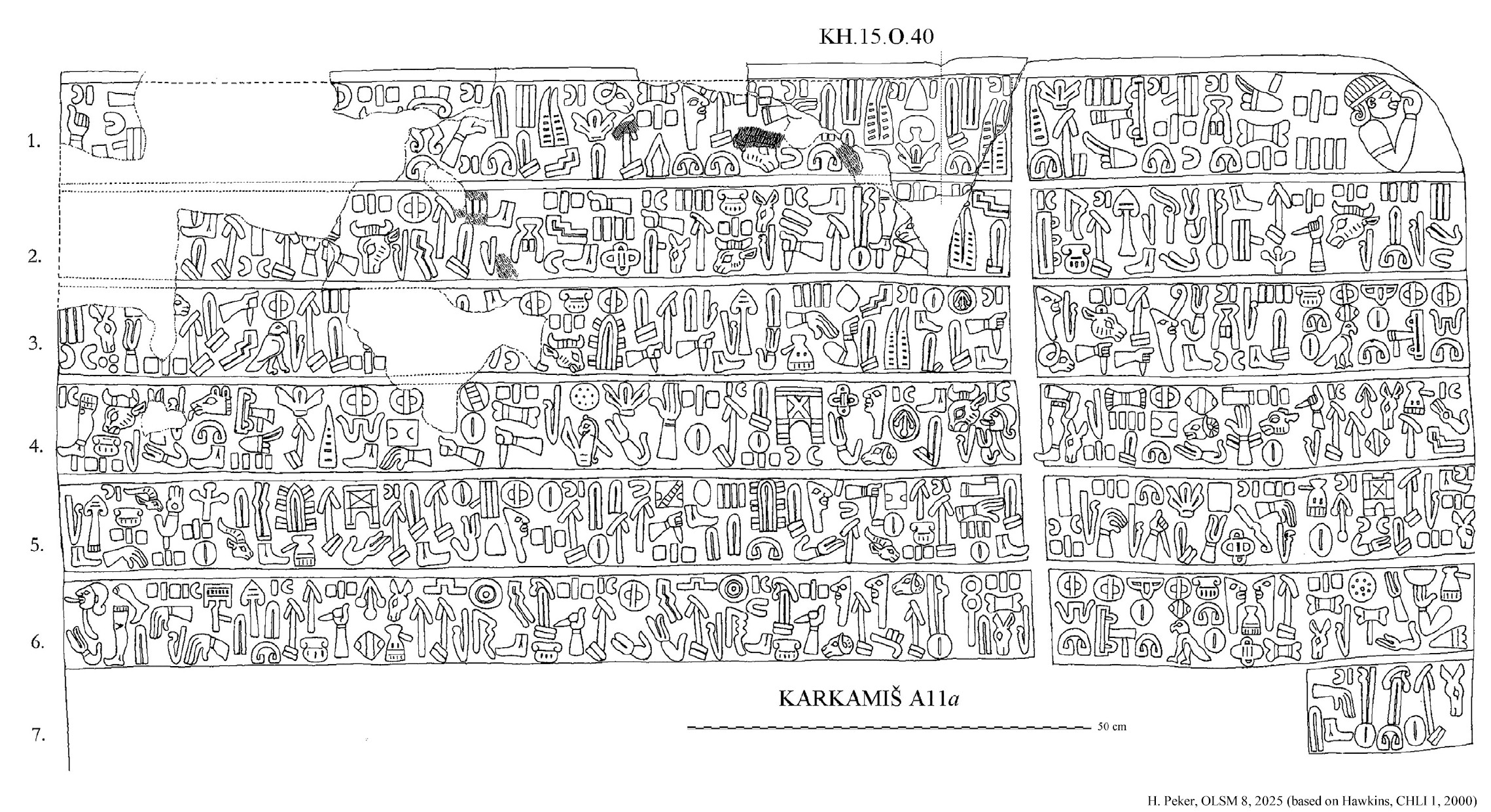TÜRKÇE
The basalt block with a seven-line Luwian inscription (KARKAMI A11a) was found in situ as the doorjamb at King's Gate (see first image below). Unfortunately, this block was destroyed after the early excavations were completed. Several small fragments of it are in the Anatolian Civilizations Museum, and one fragment is in the British Museum. A few small fragments were rediscovered during the latest excavations. The doorjamb across the gate was not inscribed. The block was 0.85 meters high and 1.75 meters wide. The author of the inscription is Katuwa, the Country-Lord of Karkami, and it is a building inscription and dedication to gods Tarhunza, Karhuha, and Kubaba. Katuwa gives his genealogy as the son of Country-Lord Suhi, the grandson of Country-Lord Astuwalamanza. Dates to the 10th-9th century BCE.

